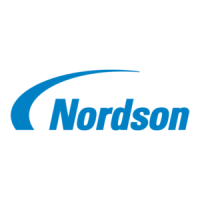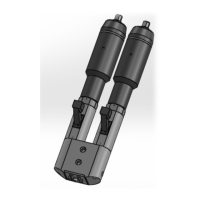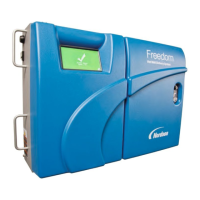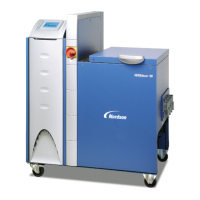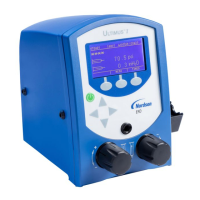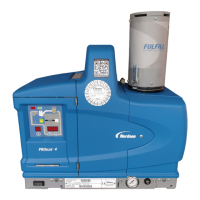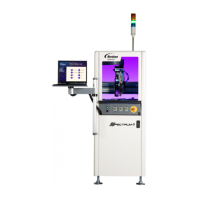Training Guide Course No. 196514
Level 2 Maintenance, X-1000 Series Dispensing Systems 2-64 P/N 196515 (Revision A)
Information Sheet 2-8-1
Conveyor Operations
A. Conveyor Configuration
1. Conveyor configuration varies depending upon the application requirements
and the type of heaters installed. Typically, the X-1010 uses an o-ring
conveyor and the X-1020 uses a belt conveyor.
2. Standard features include:
Motorized rail width adjustment
Pre-queue/dispense/post-queue stations
3. Optional features include:
Lift tables
PC Board clamp
Underboard support
Impingement, Contact Tooling
Asymtek Loader/Unloader
4. Conveyor operation is controlled by the Conveyor/Heater Controller located
in the rear of the dispensing system.
The Conveyor/Heater Controller communicates with FmNT to control all
conveyor driver motors, all pneumatic devices (Stop Pins, Lift Tables/Bar
Clamps, heater vacuum or blower), and all SMEMA communication with
upstream and downstream systems.
The Conveyor/Heater Controller also monitors the Board Sensors, RTD
heater sensors, Heat Station Timers, and regulates the power supplied to
the underboard heaters.
5. Conveyor width is controlled by moving the rear conveyor towards the front
or towards the rear of the dispensing system.
The front belt and rear belt are driven by separate motors. This approach
minimizes the mechanisms between the front and rear belts and also
simplifies belt replacement.
Procedures to check adjustable-width and fixed-width conveyor clearance,
safety interlock and XY axis movement are shown in Exercise Sheet 2-8-2
and Exercise Sheet 2-8-3 on pages 2-70 and 2-71.
6. The technician must also make sure that the conveyor rails are level with
dispensing system mechanics.
The procedure for leveling the conveyor is shown in Exercise Sheet 2-8-4
on page 2-72.

